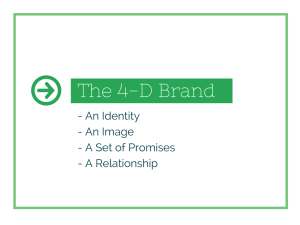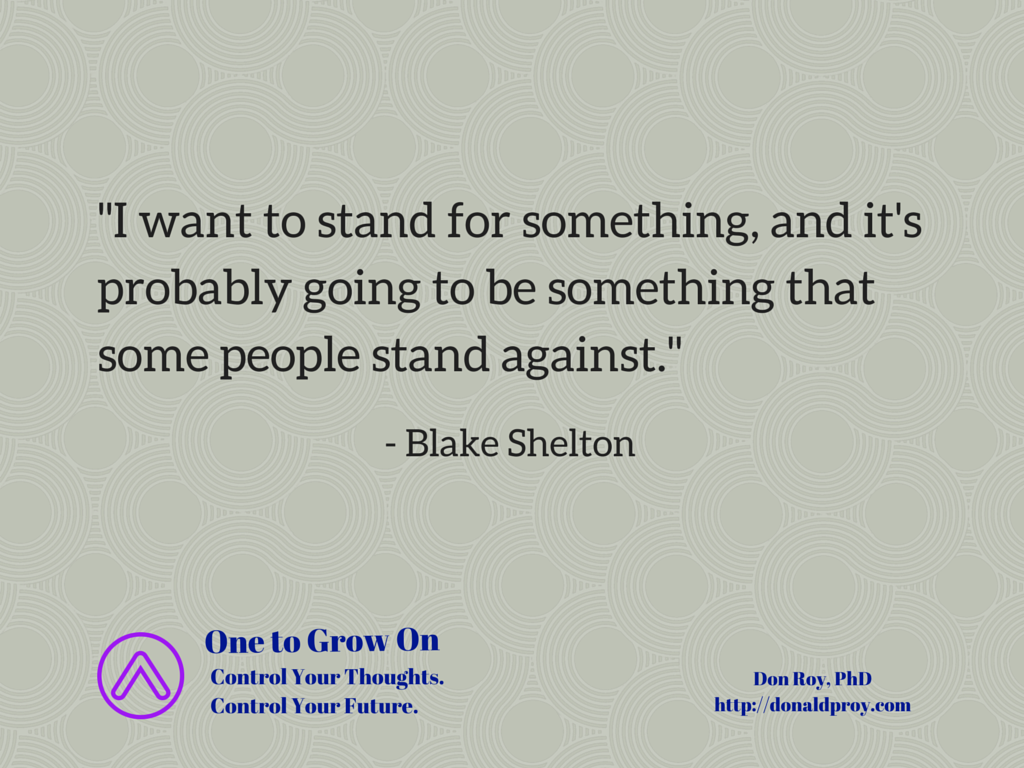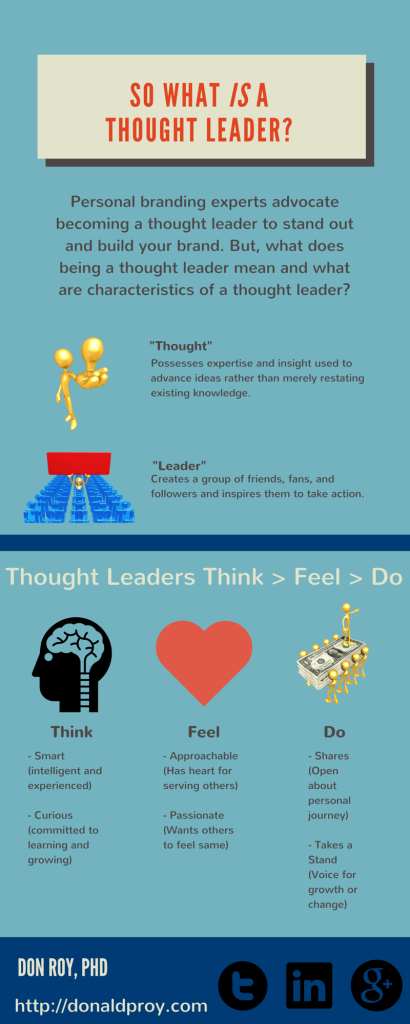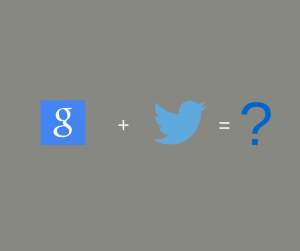Brands may have originated out of a need to identify the owner or maker of an object or product, but the role of brands in marketing today has expanded. Instead being a single-dimension concept, brands now fulfill four key roles or value-added functions:
- Brands communicate identity
- Brands project an image
- Brands make and fulfill promises
- Brands engage with individuals and groups to form relationships
The default role of a brand has been to communicate identity (think brand name and logo). However, to build a distinctive personal brand the other three roles of your brand will need to be discovered and defined.

Brand = Identity
Brands are usually thought of in terms of the use of a name, term, design, symbol, or any other feature to uniquely identify a seller’s product. In personal branding, your name is your brand. Be proud of it and use it to your advantage. Dale Carnegie powerfully and simply captured the significance of a name when he said that “a person’s name is to that person the sweetest and most important sound in any language.” Also, brand elements such as the name, logo, and colors serve as mental shortcuts that associate a product with its owner. An unusual or distinctive name can be a plus for the identity dimension of your personal brand.
If you have a common name or feel that is not distinctive, you need not research what is required to legally change your name! For example, a LinkedIn search of the name Michael Johnson returns more than 26,000 results (Michael- if you are reading this do not worry- this is not a deal breaker to building your personal brand). Fortunately, not all 26,000 Michael Johnsons compete in the same industry or for the same audience. Tactics that could be used in a situation like this to develop an identity associated with your brand include differentiating by using your middle initial, use a nickname (if you have one that positively reflects your personality), or create a visual association like a logo that appears with your name in your messaging (e.g., on business cards, in your Twitter background, and on your blog).
Brand = Image
Another role a brand serves is that it is a representation of thoughts or mental associations people hold for an object or person, which is brand image. A definition of brand image that acknowledges the role of a brand for projecting an image is that a brand is a customer or user experience represented by images and ideas. The thoughts and perceptions that one has for a person or object, known as brand associations, influence the image developed. Formation of brand associations that comprise image does not require product usage or experience. You may not realize it but people who come into contact with you or are part of your target market have associations about you that shape their image of your brand.
This characteristic of a brand is a reason why branding requires you always be “on.” Actions and behaviors are observed by others and play a part in forming perceptions of your brand. We can unintentionally send negative brand messages if we are not consistent in how we project our brand in the various environments in which we interact with others (work, school, church, social groups, etc.). Brand image resides in the minds of others; the audience that you interact with determines image through the perceptions they hold of you. Those perceptions can be based on past experiences with you, existing knowledge about you, and knowledge obtained from other sources such as your social media profiles.
Brand = Promise
Brands represent a promise of action that will benefit a customer. People value brands because they stand for intent to deliver value. Promises made by brands can be explicit or implicit. Explicit promises are statements of action such as a guarantee. Performance standards are spelled out and it is up to the brand to meet those standards.
Understanding that a brand is a set of promises is essential to building your personal brand. Some brand promises are explicit such as you meeting (and even exceeding) commitments. Simple actions such as having a report ready by your boss’s 5:00 pm deadline or volunteering to help set up a room for a meeting can communicate your brand’s value. Brand promises take on great significance through developing brand associations that give meaning to a brand. Promises are highly correlated with brand identity (how we desire to be perceived). Thus, coming up with promises you want your make through your brand is important for positioning the unique value your brand possesses.
Brand = Relationship
Exchanges between buyers and sellers may be business relationships, but one’s decision to buy from a business is often guided by the same criteria applied to personal relationships. An individual may choose friends or associates based on whether he or she believes a person can be trusted. Also, the likability of that person can influence a decision to forge a friendship. Similarly, consumers tend to enter into business relationships with companies and brands that they trust, like, or perceive to be similar to them.
Managing your personal brand as a connector is vital to establishing relationships with clients, colleagues, and community. Perhaps the most important personal branding tactic for managing the relationships around your brand is networking. The term networking may not be clear when you are given advice to “build a network of contacts” or “network with others.” This uncertainty about networking can result in paralysis, not building your brand through networking because of the ambiguity of what you should be doing. Let’s clear the air- networking can be reduced to three words: “building good relationships.” Whether it is done face-to-face or online, the aim of networking is to begin and build relationships with people who have shared interests for potential long-term mutual benefit.
Managing Your 4-D Brand
The four roles of a brand- identity, image, promises, and relationship- are complementary pieces of a personal brand. If any one of these cornerstones is weak, the strength of your personal brand will be limited. To manage your brand means to manage these four roles.
Begin now by taking inventory of where your brand is for each of these four roles. Then, consider how you want these roles to be defined as you go through the process of determining Meaning, Makeup, and Message for your brand. It is likely that you will commit to change the current state of one or more of these brand roles to get to a state consistent with goals that you have for your personal brand.








